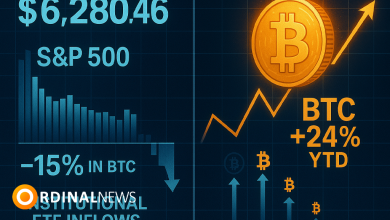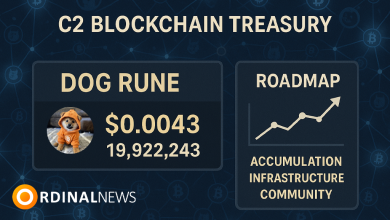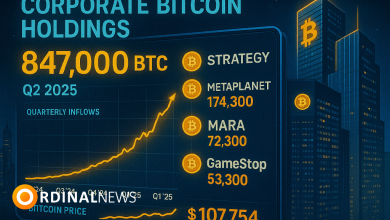What Are Bitcoin Ordinals?

Bitcoin Ordinals are the latest innovation to come out of the Bitcoin ecosystem, enabling anyone to inscribe various kinds of data onto the Bitcoin blockchain. This has led to the emergence of a new market for on-chain Bitcoin NFTs.
Read on to learn what Ordinals are, how Ordinal inscriptions work, and how you can inscribe your own Bitcoin Ordinals. You will also discover a list of the most popular Ordinal NFT projects in the market.
What Are Bitcoin Ordinals?
Ordinals are numbers given to Satoshis (sats), the smallest bitcoin units that can be recorded on the blockchain. Each sat represents a 100 millionth of a bitcoin.
Ordinals assign numbers to sats in the order in which they’re mined and “transferred from transaction inputs to transaction outputs in first-in-first-out order.” This sats numbering scheme permits the tracking and transferring of individual sats.
With the ability to inscribe data onto individual sats, Ordinals enable the creation of verifiably unique digital assets, commonly referred to as NFTs, directly on the Bitcoin blockchain without making any new changes to the protocol.
To gain a better understanding of Ordinals, let’s take a look at Ordinal Theory and how inscriptions work.
What is Ordinal Theory?
Created by Software engineer Casey Rodarmor, Ordinal Theory is a proposed methodology for individually identifying and tracking individual sats throughout Bitcoin’s outstanding supply and inscribing them with data.
According to the Ordinal Theory, each sat is serially numbered using ordinal numbers, starting from 0.
This numbering system enables the easy tracking of satoshis from the moment they are mined and throughout the entire transaction lifespan.
Ordinal Theory, as the name suggests, is simply a theoretical concept. That means satoshis aren’t actually serialized at the protocol level, and there’s no on-chain footprint.
Rodarmor proposed the scheme for giving sats serial numbers to provide Bitcoin with stable identifiers that could be used by various Bitcoin applications, such as Bitcoin NFTs.




